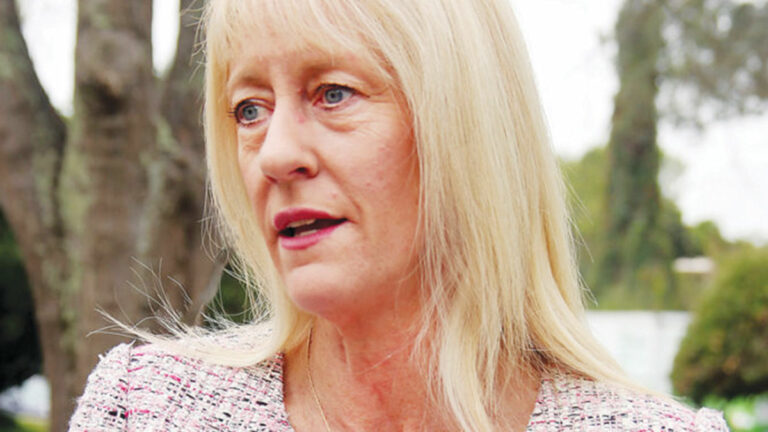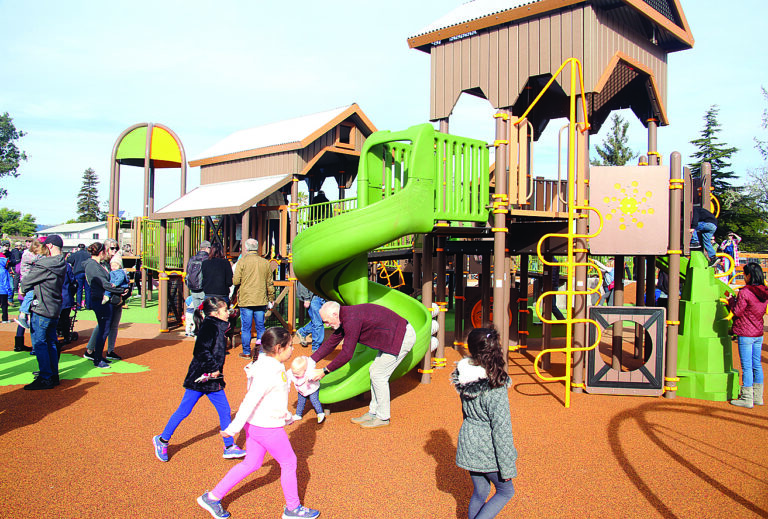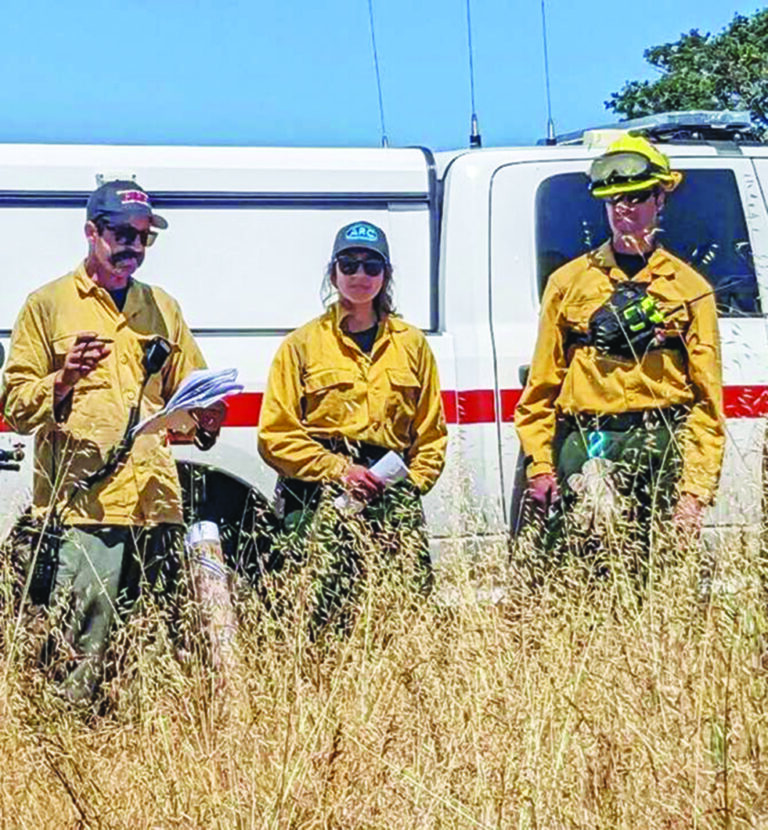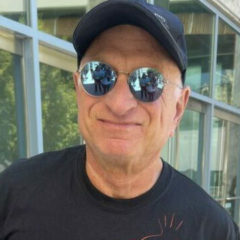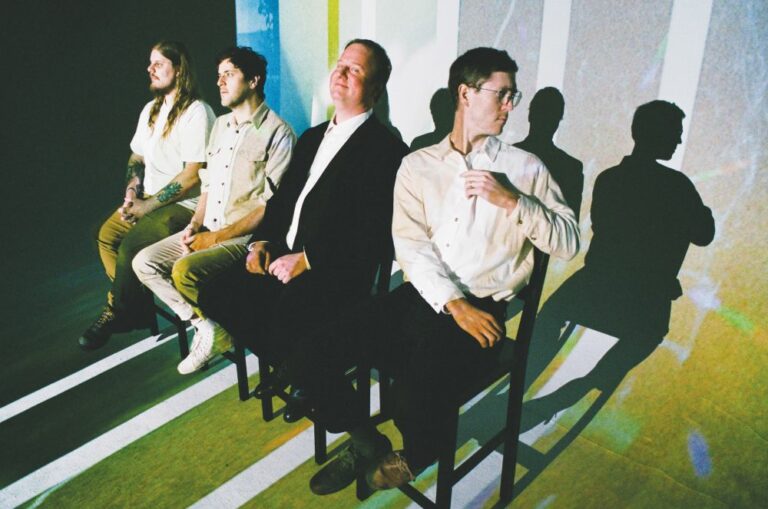I can’t remember a season of Santa Cruz Shakespeare (SCS) with this much diversity of style and text. This summer’s lineup in The Audrey Stanley Grove offers thrills, outrage, delights and timeless wordcraft. Plus the presence of not one, but two artistic directors sharing the honors. Mike Ryan, 50, the outgoing Artistic Director of 10 years and the incoming AD Charles Pasternak, 39, will also share the stage together in the season opener, The Book of Will, a brisk sit-com about two of Shakespeare’s fellow actors racing to authenticate his widely bootlegged plays and save them for posterity. The pace-setting opener was written by Lauren Gunderson and will be directed by Laura Gordon.
This season’s second offering is the ever-controversial Taming of the Shrew, in which Shakespeare gives us convention-flaunting Katherine (the “shrew”) and her sweet-tempered sister Bianca, both, to their father’s chagrin, still unmarried. Bianca has her pick of suitors, but no man courts haughty Katherine until the fortune-hunting Petruchio dreams up an ingenious scenario. Just who tames whom remains the provocative crux of this hilarious and brilliant piece of theater, directed by Robynn Rodriguez.
Rounding out this season’s repertory is Shakespeare’s masterpiece King Lear with former Shakespeare Santa Cruz Artistic Director and Royal Shakespeare Company actor Paul Whitworth in the title role. A complex tale of two dysfunctional families, Lear is laced with foolishness, greed, revenge and madness. And tenderness. In short, the ultimate Shakespearean tragedy with a powerhouse cast, directed by Festival veteran Paul Mullins.
____________
Whitworth, Ryan and Pasternak share a lineage of acting, art directing and shaping our Shakespeare festival. Here are some of their thoughts as the season begins.
Did you always want to be an actor?
PW: I grew up in Greece and part of me wanted to be an archaeologist, because one of my earliest memories is sitting and following a plow in Mycenae and picking up shards of pottery and you could see the brush marks, and even thumbprints of the potter. Part of me wanted to be a fighter pilot but I’m red and green color blind so that was out. But in the end, acting was the thing I did best. I knew where I was on the stage, I knew where to stand without knowing why. I like pretending to be somebody else. And I’m finding Lear absolutely thrilling to tangle with. I think of myself as having been very lucky, that life has allowed me to do a bit of acting, directing, a bit of translating and teaching.
MR: Yes. I wouldn’t have chosen another one for the life of me. I was earmarked for the law, my father’s an attorney, my brother’s an attorney, I was supposed to be an attorney. But I got side-tracked. When I graduated with my MFA, my mother sent me in the mail my kindergarten report card. Under “behavior,” the notes were: runs too fast, talks too loud and dominates play time. So I think acting was probably destiny.
I think good actors have three essential qualities: they’re empaths, they’re disciplined
and they have vivid imaginations. If you’ve got those three qualities then you can be a good actor. The joy of acting to me is getting to use my imagination in the way I did as a child with fantasy novels. I do have a child’s profession!
CP: I love baseball and up to the time when I was about 16, there was a split point where I couldn’t keep doing acting and baseball. The attractions of acting were greater. The real answer is there was never anything else. I’ve been consumed by Shakespeare since childhood classes at the Will Geer Theater in LA’s Topanga Canyon. When interviewing for this job I had already run a company devoted to Shakespeare, The Porters of Hellsgate Theatre I founded in LA 15 years ago. I’d been dealing with budgets, unions. So in a way you’re stepping into the same fire, just a larger frying pan.
Why Shakespeare?
MR: I love a variety of styles and playwrights, but the thing that’s so amazing about Shakespeare is that there is a size and depth to it that is impossible to plumb. You can always hurl yourself in and still find more. Always more to explore.
PW: I had a riveting boyhood experience of seeing Shakespeare. I was about 11 when my class at Repton Preparatory School went off to the senior Repton School founded in 1559, and saw King Lear. All the women were played by boys, Lear himself must have been 17 or 18, and I didn’t understand what was going on but I thought it was the most shocking and wonderful thing I’d ever seen. I knew I was in the presence of something out of this world. I’ve always liked it. I think of it as the first proper theatrical experience I’ve ever had.
CP: As an actor I can say that I don’t think any other playwright takes better care of you. No other playwright gets deeper inside you, in my experience. You’re never good enough; he is greater. You return to try to get a little further up the mountain but you’re never going to get to the peak. As an actor, while it’s humbling, it’s also the most rewarding experience I’ve ever felt. And that doesn’t even touch on the fact that you’re speaking this stunning language, it gets into your heart. I’m never higher than when I get to play something good in the Shakespeare canon.
How do you prepare for a role? The mechanics?
PW: If you have 10 or 14 weeks to rehearse a play you can learn it on the job. Here you simply can’t there is no time, certainly if your part is of any size. I started reading and re-reading a year ago, and I do it most days. Out loud, yes. I use as a vocal warm up chunks of Hamlet which I’ve known since I was twenty. You learn Shakespeare because it’s so weirdly written that it sticks in your mind, you don’t recite it, you don’t remember it—you have to get into a state where one thought causes the next. And that just takes time.
After many Zoom meetings with Paul Mullins and Lear expert Michael Warren we were able to pare down the text. The text of King Lear is one of the most complicated, thorny things in the whole of Shakespeare in that there are two very different versions, one has 300 lines that aren’t in the other. The other has 100 lines not in the other. Finally we’ve come up with a cutting of Lear which, if we get our skates on, ought to have the audience out there with comfortable bladders and not too cold at the end of an outdoor show.
CP: I read the play many times, in many ways—aloud, quietly, moving, in one go, in a few goes. I want to get the text in me, and then get the part off book if it’s a larger part. That’s about repetition. With larger roles you can get so much more done in rehearsal if you’re ahead of the curve on it. When it’s Shakespeare, I know he knows better than me, so I’m trying to read every little hint he has implanted in the text. And then hopefully get to a good rehearsal room with a great director and the play itself. I want to play in the rehearsal room. My favorite rehearsal room is a sort of organized chaos.
MR: I usually avoid watching other people’s takes. I find that I’m unduly influenced by them.
I read and reread and reread a script. That repetition helps to memorize lines, a lot of people think about acting as putting on a mask and becoming this other character. And it’s actually quite the opposite, for me it’s more about stripping away the parts that you don’t need so that what you bring to the role is the parts of yourself that are perfect for it.
In that way your performance is honest. Rather than a veneer. It’s more about paring away and imagination of course.
One of the first lessons I learned—you must always find something in the character that you like, even if they’re a terrible person, it can be something that nobody else knows, something that gives you a reason to love the character. It is important to love the character.
What is going on in King Lear?
PW: I’ve had one insight I suppose. King Lear is the only tragedy that has essentially a subplot. There are two plots: The main plot is about King Lear; the subplot—and they both become intertwined—is instigated by Edmund, the bastard son of Gloucester. If you think about who these people are, Lear is at one end of life and thinking about retirement. Lear has everything. He is a king, the only thing he lacks is a son. And the protagonist of plot B, Edmund, is an illegitimate son, who is very handsome and bright and who has absolutely nothing. And he’s at the beginning of life. So you’ve got a young man with everything to gain, and an old man with everything to lose. And those are the triggers of the play.
It’s interesting that there’s quite a lot of plot in Edmund’s play. He is entirely out for himself as who isn’t when they start out in life. And of course in Shakespeare’s day he would have had no right to property, so he’s really fighting from the bottom. There’s a lot of plot in Edmund’s play, and in Lear’s play there’s almost no plot at all. A play is a way of giving shape to experience through a plot.
How do you unwind?
PW: Swimming was my first love as a sport and a way of keeping fit. I used to swim at UCSC. But the year before COVID they closed the pool, then COVID came. A friend told me about these buoys at Cowell Beach, and I gave it a go. Now I do it every evening. Wild swimming they call it in England. Measuring my progress by the buoys. I started it apprehensively but now I have found swimming in the ocean to be life changing. It makes you say and feel absurdly spiritual things.
MR: I’m a gym rat. Definitely, exercise is important to me, the meditation of running, and the stress release of workouts.
The challenges involved in artistic directorship?
CP: Certainly time management. I’m something of a workaholic, but one has to balance. There is art in the administration, but not all of it is artistic. I love spending time with donors. I like raising money, but I have to balance energy. The most exciting thing for me is the gathering of a season in terms of plays that speak to each other, in terms of artists that can speak beautifully through the work. Gathering a company, gathering the voices. Amazing to have this kind of theater in this size of community.
Repertory is probably the most exciting thing to me, both in terms of the company and in terms of the shows. And unfortunately we live in a country where there are less and less rep theaters. That’s why this company is so rare. Auditioning is crucial. Looking for actors who will be good company members. In the arts nobody gets paid what they’re worth. You have to love this. Obviously I want to hire people with ambition, but who are also willing to be excited about the season.
MR: Having had artistic control for these last years has been such an incredible gift. As an individual artist you don’t get to experience the communal family, love and support. To be on the receiving end of such gratitude and admiration is a very affirming thing, something you don’t often get to experience as an actor. Lastly there’s the paycheck. For an actor it’s a gig economy, but the nice steady AD paycheck is quite something.
The stress is the main thing I will not miss. When you’re in an executive leadership position you really do feel that the responsibility rests on your shoulders. If things should fail, it’s on you. The weight of responsibility.
PW: When I was Artistic Director I tried to cast people who I felt would get on well together. Having a happy rehearsal room is key. Paul Mullins, our Lear director, is very smart in how he reads a play. He’s extremely open minded about the way things go. But he’s not one of those people where you feel that everything’s bent to a concept come hell or high water. Also I think he creates one of the happiest and most creative rehearsal rooms that I’ve been in.
Is theater an older person’s passion?
CP: Maybe people come to theater later in life. You certainly need a bit more disposable income. Although we’re working hard to keep the theater accessible to everyone. I’m not worried about the young generation—I think they will come. In droves? In their 20s when they can go see music concerts? Probably not. But I want to make sure the doors are open and that the invitation is made, and that we provide an exciting enough experience that they will want to come back. Nothing can replace live theater. You go to see that moment when something happens the actors have never done before.
A proudest achievement?
MR: Probably just making the decision to do Santa Cruz Shakespeare in the first place, it was a scary moment. I didn’t know what would happen, so many of us reach tipping points where we think, my life can go this way or it can go that way, this is the harder scarier thing to do and often we decide not to do it because of that. So just that decision to say yes, to fighting for this festival.
The power of Lear?
PW: As I’ve sort of grappled with Lear’s poetry—he speaks almost entirely in verse—it’s some of the strangest, most beautiful, most extraordinary writing. It seems to me that one of the things this play is about is what happens when life doesn’t have a plot. If you take away religion, love, work, status—what happens to us when we lose the plot? Because ultimately that is the fate of every single one of us. And I think one of the genius things about this play is that Shakespeare writes one half of it that’s quite plotty, in order to explore what happens when there’s no plot at the end of your life.
____________________
Santa Cruz Shakespeare celebrates its 10th year with 2023 Summer Festival productions of Shakespeare’s The Taming of the Shrew, King Lear, and Lauren Gunderson’s The Book of Will.
The Book of Will by Lauren Gunderson
Director: Laura Gordon
Opening Night: July 13, 2023, 8pm
The Taming of the Shrew by William Shakespeare
Director: Robynn Rodriguez
Opening Night: July 14, 2023, 8pm.
King Lear by William Shakespeare
Director: Paul Mullins
Opening Night: July 28, 8pm.
(The Fringe Show)
Exit Pursued by a Bear by Lauren Gunderson, Director: Rebecca Haley Clark
Performance Dates: Aug. 16, 2023, at 7:30pm and Aug. 22, 2023 at 7:30pm.
Productions will take place July 8 – Aug. 27, under the trees and stars in the Audrey Stanley Grove at Santa Cruz’s DeLaveaga Park. Tickets range from $20 to $70.
Tickets at santacruzshakespeare.org/season-2023.
The seasonal Box Office opens for phone orders beginning June 6. Box office hours will be Tuesday through Thursday from 12-4pm. 831-460-6399.





